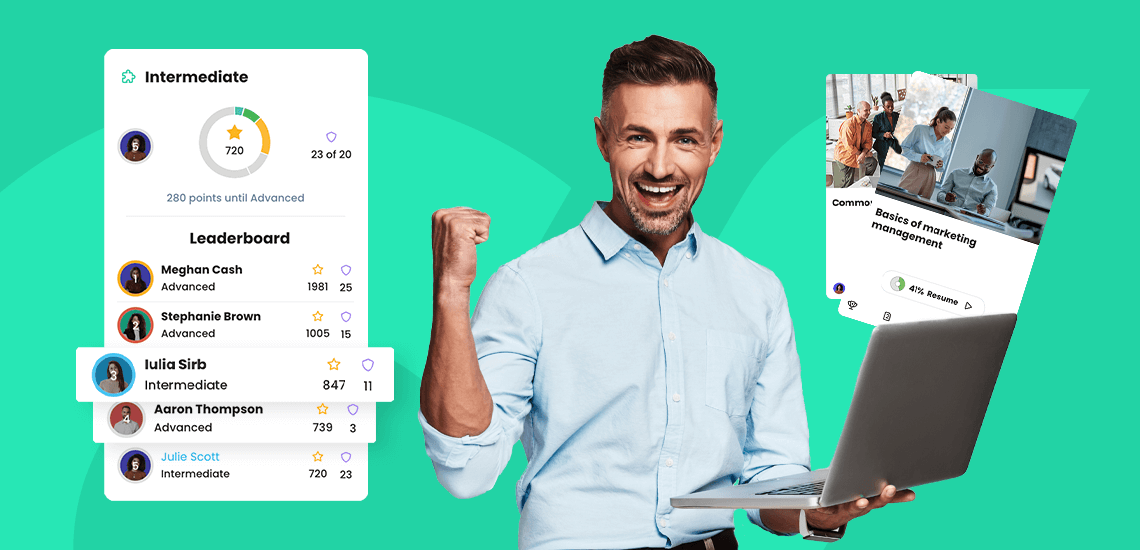Back in 2017, a study by McKinsey & Company said that by 2030 as many as 375 million workers around the world would have to learn new skills because of automation. As this study was conducted before the pandemic, the estimated numbers might be way higher due to several other factors besides technological advancements.
Read more: Why companies should prepare for the post-automation workforce
Now, it's even more important for employees to be able to learn the right skills. They need to move forward in a changing business environment and organizations have the difficult task to not only reskill but right-skill their workforce.
Knowing the needs
We’ve all been in this global upheaval for long enough to get an idea about where things are going and how everything will look at the end of this (unwanted) journey.
While it’s not an easy job, organizations need to take a good look at their human resource and future. They have to know what skills will become necessary, how many people need to know what, and to what degree of proficiency.
Read more: 5 Skills for the post-automation workforce
Furthermore, they should analyze which competencies will no longer be necessary or in high demand. This will show how many employees will have to shift towards other skills or even jobs.
Communicating properly
Companies (or, better said, internal communication teams) know very well the best ways of disseminating the corporate message. That, however, does not stop them from doing poorly when it’s about delicate subjects such as right-skilling, especially at a time when people are already worried about many other things.
Consequently, it's paramount to properly inform employees of what the company is doing and why. The company should only make promises if they're certain that they can keep them.
Read more: 5 Tips for organizational leaders on how to communicate effectively about change
Getting L&D on board
If the internal communication team has a crucial role in getting the message across, the training team will design and deploy effective right-skilling programs.
While the executives make most decisions, the carrying out part is in the capable hands of instructional designers and training facilitators. As a result, they should be included in meetings, know how long the change process will take, and most importantly, understand what the objectives and KPIs are.
Read more: How the pandemic transformed L&D
Learning must become varied and flexible
This idea has been on the table for some time and it has lately become more of a necessity than a trend. With an increasingly diverse workforce (both geographically and generationally), there’s a growing need for diversity in training styles, formats, and ways of delivering learning. The training offer must be as varied and complex as the skill gaps that will need to be closed.
For example, rather than relying on one tool, having a diverse library open to employees and easily accessible on any device is the way to go. It’s also a good idea to advocate self-direction and informal learning within the organization.
Video and gamification should take center stage
Videos are very much in. If you don’t believe that, just check out some of the current statistics for YouTube or TikTok). They are also a preferred learning medium for Gen Z-ers.
The younger employees grew up in an era with online games and widespread internet connectivity. As a result, L&D specialists should harness the potential these two generational favorites have when it comes to effective learning and re-skilling.
Combining these with the latest trends in VR and AR can only lead to positive results for the organization.
Content curation must be brought to the next level
For a long time, curation was mostly about negotiating contracts with learning providers and taking time once in a while to weed out obsolete courses. In the current situation, curation must become a much more dynamic and complex process.
Read more: What L&D professionals need to know about curating learning content
With a growing need for diverse and fresh content, keeping the learning library well-stacked and the materials constantly updated is an ongoing job. Markets are constantly evolving, organizations do so along with them, and it falls in the care of the learning specialists to make sure that employees have the tools and information they need to grow their careers.
Wrapping up
Right-skilling employees is about more than making sure they learn something new and become more efficient in their work or move on to a new career. In the current volatile environment, right-skilling is the only way to ensure that businesses close learning gaps and employees feel more secure about their future.







